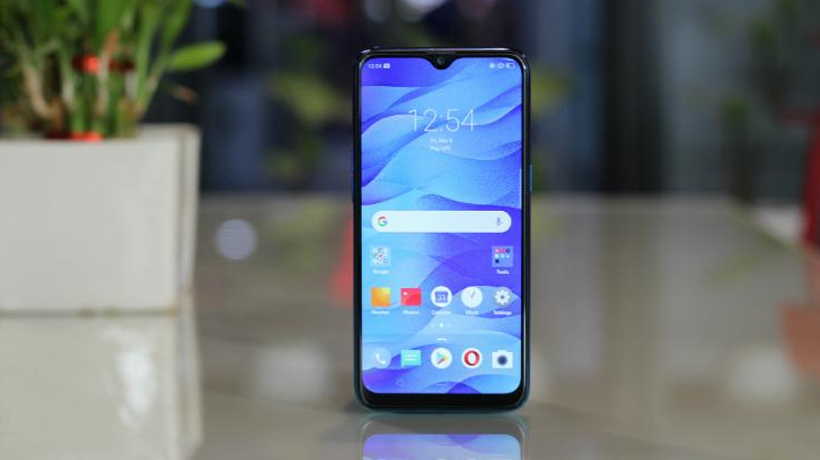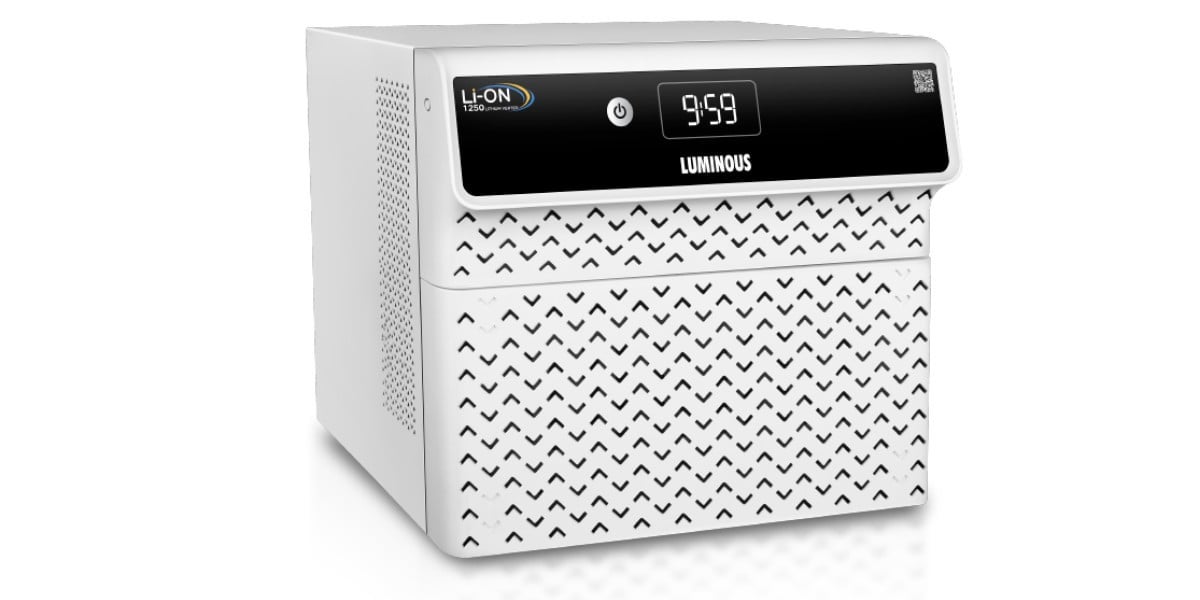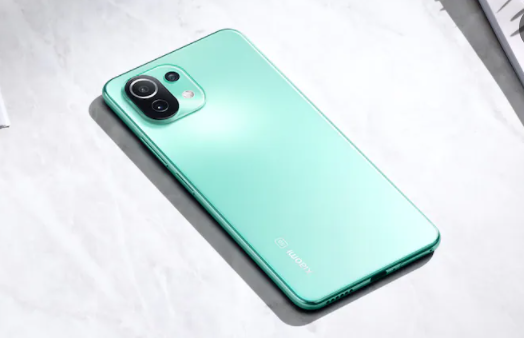Trending Now
- “I will soon make an announcement regarding a statewide tour across Tamil Nadu.” – O. Panneerselvam.
- Vatsala, Asia’s oldest elephant, has passed away at Panna Tiger Reserve; social activists mourn the death of this elephant, which lived for over 100 years.
- “The U.S. Govt earned ₹8 lakh crore this year through increased tariffs on foreign goods.” – U.S President Donald Trump.
- World No.1 Aryna Sabalenka has advanced to the semifinals in the Women’s Singles category at Wimbledon Tennis.
Technology
Realme 3 review: A good all-rounder, but can it take on Redmi Note 7
![]() March 11, 2019
March 11, 2019
Realme has managed to make a name for itself in India in a very short span of time, and this is because the company launched a series of successful phones in 2018. Phones like the Realme 2, Realme 2 Pro and Realme U1 have impressed us with their design, performance and the fact that you’re getting a value smartphone at an affordable price. Realme aims to maintain its streak in 2019 with the Realme 3, which has been launched in India starting at Rs 8,999. The successor to the Realme 2 touts a new gradient design, waterdrop display, Android Pie and some familiar internals.
In 2019, the competition is only getting fiercer as companies like Xiaomi and even Samsung are launching smartphones that offer big features (such as 48MP camera, 5000mAh battery) at really affordable prices. To that end, the Realme 3 does offer a few attractive features, but largely follows a tried and tested formula that may not cut it today. I spent a week with the Realme 3 and here’s what I think about the device.
Realme 3 design
In terms of design, the Realme 3 look like it belongs in 2019. It gets a dewdrop display like the Realme 2 Pro, a gradient colour design which is all the trend right now. The rear panel has also been upgraded as one, seamless cover that extends all the way around the frame and meets the glass panel on the front. But Realme isn’t using a glass panel, which might disappoint some considering the Redmi Note 7 now offers a glass back under Rs 10,000. That being said, the rear panel of the Realme 3 still looks attractive thanks to an injection molding technique that gives the panel a reflective and smooth finish.
The Realme 3 comes in two gradient colours – Dynamic Black and Radiant Blue. My review unit was in Radiant Blue, which offers hues of blue on the top that gradually shifts towards hues of green on the bottom. The Dynamic Black colour sees a combination of black and purple as well as some glitter effect on the bottom part of the panel. Both the options look attractive, especially in this segment were gradient phones are still rare to find.
There is a silver accent around the fingerprint sensor and the camera module as well as a copper ring around the primary camera sensor, all of which add a touch of premiumness to the device, which is appreciated. The vertical camera module and Realme branding on the left side makes the panel look aesthetically pleasing. But this is a glossy shell that may look a little too loud for some people. It is also a magnet for fingerprint and smudges and you will find yourself cleaning the panel a few times during the day.
Thanks to the generous amount of plastic being used, the Realme 3 is a lightweight phone at 175 grams, which is impressive considering it comes with a fairly large battery. The fingerprint sensor is placed on the back, while the volume buttons are placed on the left side of the frame and power button placed on the right. The bottom sees a speaker grille and a 3.5mm headphone jack on either sides of a microUSB port.
Realme 3 display
The Realme 3 sports a 6.2-inch waterdrop display with an HD+ (1520×720) resolution. The droplet notch is an upgrade over the wide, iPhone X-like notch on the Realme 2. It makes it easier and less distracting to view the display. The bezels on the top and side are thin, while the chin is pretty thick. Overall, you get about the same 88 per cent screen real estate as you did on the Realme 2.
The 720p display on the Realme 3 does not offer a lot of sharpness or clarity. The pixelation is noticeable on app icons and while watching videos on YouTube or Netflix. The phone also does not support the Widewine L1 standard, so expect less than 720p content on Netflix and other streaming platforms.
That being said, the Realme 3’s display does offer good colour reproduction that falls in between natural and vibrant. However, viewing angles are average at best and brightness levels could have been better as it gets difficult to read the screen under the harsh New Delhi sun.
Realme 3 performance and software
Realme’s latest handset gets the same 2.1GHz Helio P70 octa-core chipset as the Realme U1. This is a MediaTek chipset with four Cortex-A53 cores and four Cortex-A73 cores along with a Mali-G72 MP3 GPU. This is paired with up to 4GB of RAM and 64GB of internal storage, which is the variant I received for review. Out-of-the-box, the phone runs smoothly for the most part. Apps take a moment to open and load, but switching between apps to multitask is quite smooth. Browsing through the UI is smooth as well, but I did encounter some lag while scrolling through heavy apps like Facebook. I also encountered frequent crashes, especially with the camera app.
Arguably, the one are where the processor really shines is while playing graphic intensive games. The Realme 3 runs games like PUBG and Asphalt 9 really well, offering a consistently smooth, lag-free experience even with the graphics setting on high. Games work well not only because of the Helio P70 SoC, but also thanks to Game Space, which bumps up the performance of the device while gaming.
The Realme 3 is the company’s first phone to ship with Android Pie with the latest ColorOS 6.0 on top. With the latest software, Realme and Oppo phones finally get an App Drawer, which needs to be enabled in Settings. ColorOS 6.0 also brings a borderless design and a simpler user interface along with new gradient colours for the background, and smaller app icons, all of which makes the UI pleasing to look at. It certainly looks less cluttered and more current compared to the previous generation skin.
You also get an updated Game Space, which aims to improve gaming performance. There is still a fair deal of bloatware and pre-loaded apps that come with ColorOS, which may annoy you. Apps like DailyHunt, Opera and UC Browser, ShareChat and Webnovel are some extra apps that come with the device, but they can be deleted. One of the more annoying issues about ColorOS 5 was the sheer number of spam notifications, which seems to have been reduced a great deal with ColorOS 6.
The fingerprint sensor and face unlock are both really fast and snappy to unlock the device, which comes as no surprise. The bottom-firing speaker is loud enough and delivers a decent amount of clarity while listening to music. There is nothing wrong with the call quality as well, and I did not encounter any call drops during the review period.
Realme 3 camera
The Realme 3 gets a pretty standard 13MP + 2MP dual camera system on the back. It’s similar to the Realme 2, but one new feature that the company is offering with the Realme 3 is a new Nightscape mode. This feature aims to offer improved low-light photos by increasing the exposure. Nightscape doesn’t ship out of the box, but it comes with an update that Realme recently rolled out. There is also a new Chroma Boost mode that uses AI to recognise a scene and offer better dynamic range, contrast and exposure.
The primary camera does capture good colours and clarity in outdoor setting with good sunlight, but in every other situation pictures look hazy and washed out. Colours often look muted and I found the autofocus to be extremely moody, which often resulted in blurry shots. You should enable Chroma Boost when you feel colours look too dull as the feature indeed offers better dynamic range and contrast. The inbuilt AI was able to detect some settings and scenes and was able to automatically adjust the settings to offer something better, but the change is barely noticeable.
Realme 3 battery
The Realme 3 gets the same 4,230mAh battery as the Realme 2, which is great to see. This is a substantial battery capacity that can easily manage about a day and a half on a single charge with average to above average usage. The Relame 3’s display and chipset barely drain the battery life, and there are a couple of intensive power saving options to get the most battery life out of the device.
Unfortunately, the Realme 3 does not offer fast charging support. You get a 10W charger with the box that takes about two and a half hours to fully charge the device. The phone delivers good battery backup for videos and gaming, and standby battery drain is minimal as well. On an average, I managed at least 6 hours of screen on time with the Realme 3, which is pretty great.
Should you buy the Realme 3?
Realme is keen to take on the best affordable phones from Xiaomi. The company already has its eyes set on challenging the Redmi Note 7 Pro when it announces the Realme 3 Pro next month. And I’m quite excited to see what the Realme 3 Pro has to offer. The Realme 3, however, doesn’t offer that wow factor that we got from past Realme phones.
Don’t get me wrong, the Realme 3 is a fine device and works well where it matters most. The phone comes with an A+ battery life and the Helio P70 chipset offers a smooth performance and user experience, especially while gaming. ColorOS 6.0 is also better than before, and a gradient design is always nice to see in this segment. I just feel the Realme 3 lacks that defining feature that can take can help it go head-to-head against the Redmi Note 7. Xiaomi’s device offers a Snapdragon 660 SoC, Type-C port with fast charge support and a glass back design, all of which are quite impressive to see under Rs 10,000.
While the Relame 3 may not be a Redmi Note 7 challenger, the phone does get an edge over the Samsung Galaxy M10 in this segment with better cameras and performance. The base model is worth going for if you’re on a strict budget. But if you’re considering the Rs 10,999, you may as well spend Rs 1,000 more and buy the Realme U1 instead, which offers the same chipset but better cameras and a 1080p display.
























